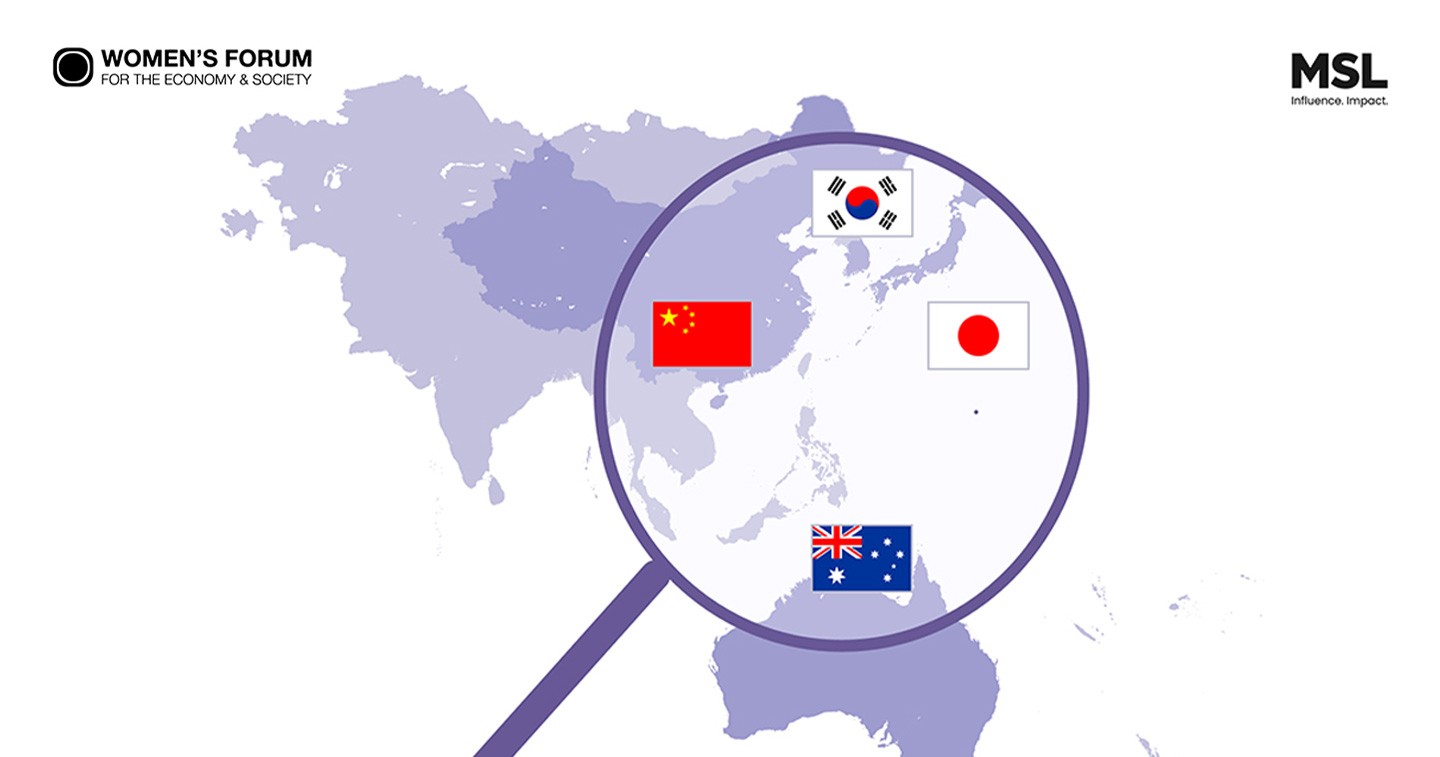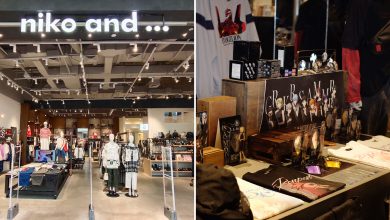SINGAPORE — MSL Asia Pacific has released the latest Women’s Forum Barometer, Asia Pacific, which brings together recent research, disaggregated data, and responses from citizens across 10 different countries, with a focus on Australia, China, Japan, and Korea. This edition reveals today’s complex reality and persistent stereotypes of working women, comparing respondents from the G7 nations to those in Asia Pacific (Australia, China, Korea, and Japan).
This edition of the Women’s Forum Barometer, Asia Pacific, highlights the ongoing differing perceptions and experiences between women in the G7 and the APAC:
- Roughly 49% of respondents from Asia-Pacific endorse the stereotype suggesting inherent disparities in natural aptitudes between men and women, perpetuating the notion that men excel in scientific subjects while women excel in literary subjects;
- Respondents in Asia-Oceania agree more strongly than those in the G7 that women “can’t have it all, if they want to be a good mother, they have to accept to partly sacrifice their professional career” (60% compared to 48% in G7); and
- Alarmingly, close to half of the surveyed women have had to take breaks from their careers for at least a month to fulfill caregiving obligations, a scenario notably less common among men (47% compared to 28%).
“As we navigate through the evolving landscape of gender equality, it is crucial to still recognise that Asian women face unique challenges distinct from those experienced in G7 countries. Addressing these inequalities requires a concerted effort to rethink and reshape our gender policies, while simultaneously challenging and transforming outdated cultural norms. By doing so, we can pave the way for a more equitable and inclusive future for women across the Asia Pacific region,” said Margaret Key, CEO of MSL APAC.
“The Women’s Forum Barometer highlights the disparity between perception and reality for women in the workplace. It is important to understand that empowering women in the workplace goes beyond creating opportunities; it also involves reshaping perceptions and challenging the realities they face daily. By doing so, it will pave the way for women to thrive and lead, transforming not just the workplace but society as a whole,” said Nannette Lafond Dufour, Chief Impact Officer at Publicis Groupe.
Stereotypes about women in the workplace
- Out of all respondents, 71% of women felt they have more opportunities to succeed than men with equal competency, highlighting a 12% gap, with only 59% agreeing.
- Of the 51% of total respondents — encompassing all age groups and genders combined — who believed that “Career-wise, men are naturally more ambitious than women,” 55% were men.
- Within the 42% of all men and women who agreed that “Women are psychologically more fragile than men,” men made up 45% of those convinced.
Working at the sacrifice of their private life
- Gender stereotypes persist, especially among the working population. 70% of respondents are convinced that “It is more difficult for a woman than for a man to have a successful career because she has to accept to partly sacrifice her family life”
- However, there seems to be a slight shift in the value of professional careers in a woman’s life, as only 38% of respondents agree that “A woman will always be happier in her role as a mother rather than in her professional life.”
Within the 4 Asian countries investigated, inequalities within the labour market are a reality in the lives of women
- The four countries experience a larger gender pay gap: 20.9% as compared to 12% in OECD
- Women are less present in the labor market at 56.9% as compared to 71.5% of men
- More women work part-time: 32.9% compared to 13.5% of men
- Despite equal or higher qualifications, women are often paid less
Clear perceptions of inequalities in careers
- One in 3 women have already realized they were paid less than male colleagues with equal competence
- One in 3 women have realized that a male colleague had been promoted or chosen for a promotion over them, even though she was more competent
Inequality hides under the cover of unpaid work
- Globally, women contribute significantly for all unpaid care. If this current trends continue, the gender gap in unpaid care work will not be closed until 2228
- The inequality and unpaid care results in career breaks with major negative consequences on women’s careers and financial security: 47% of respondents stopped working for one or more months to be able to care for loved ones; 42% for one or more years for the same reason. This is compared to 28% and 22% of men respectively for the same reason.
- In the European Union, women over 65 have a gender gap in their pension income of 37.2%. Across OECD countries, the average elderly poverty rate is 15.7% for women, compared to 10.3% for men.
The Key Role of paternity leave in closing the gender gap
- In Australia, fathers receive 2 weeks, paid at 43.2% of salary
- In Japan, fathers receive up to 52 weeks, paid at 61.3% of salary
- In Korea, fathers receive up to 54 weeks, 46.7% of salary
- The stark gaps between paternity leave in these markets highlight main issues such as part time and temporary workers being excluded from such benefits, the stigma and fear of career impact that discourages leave usage, and the low compensation which reduced financial feasibility
To combat these inequalities, concrete calls to action have been tested and received strong support.
- Education and STEM: 82% of respondents support the inclusion of an equal number of female and male role models in STEM textbooks; 79% of respondents support the inclusion of mandatory training on unconscious gender biases in the academic curriculum.
- World of work and business: 74% of those questioned are in favor of disclosing the names and companies where there are salary gaps between men and women with equal skills; 765 of respondents support the requirement of companies to publish an index (score out of 100) showing wage gaps.
- Family: 84% of respondents support businesses providing quality and affordable childcare and elder care; 74% of those surveyed are in favour of reserving part of the parental leave for exclusive and non-transferable use by fathers.
Overall, stereotypes about women in the workplace are more pervasive in the Asia Pacific region, as compared to G7 nations. Significant efforts have been made to address the gender gap and reduce the burden of unpaid work on women, but more needs to be done.
Despite the workforce segmentation, there is broad and growing support from both genders, industries, and governments, signaling a collective commitment to drive the necessary to effect changes.








